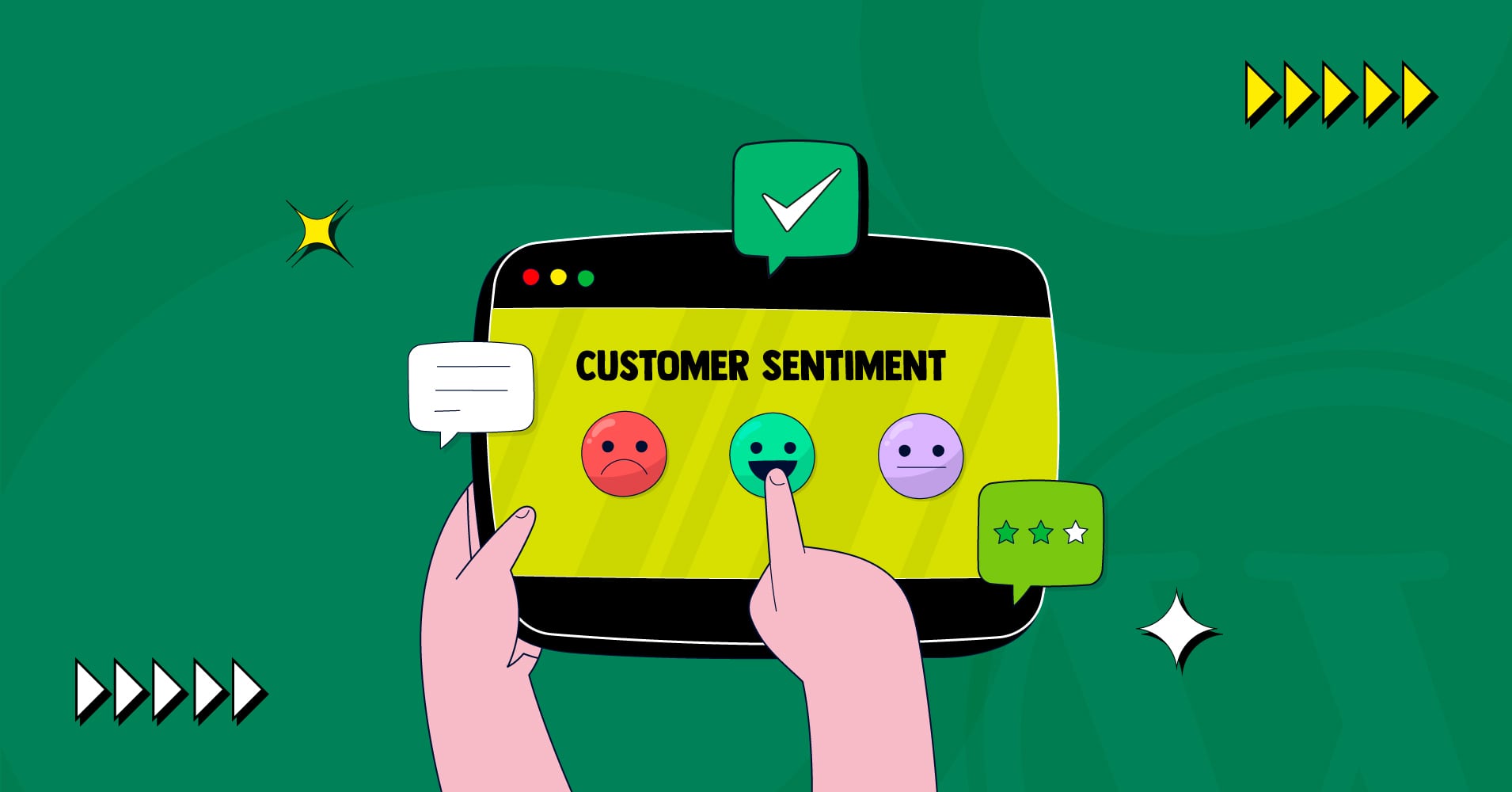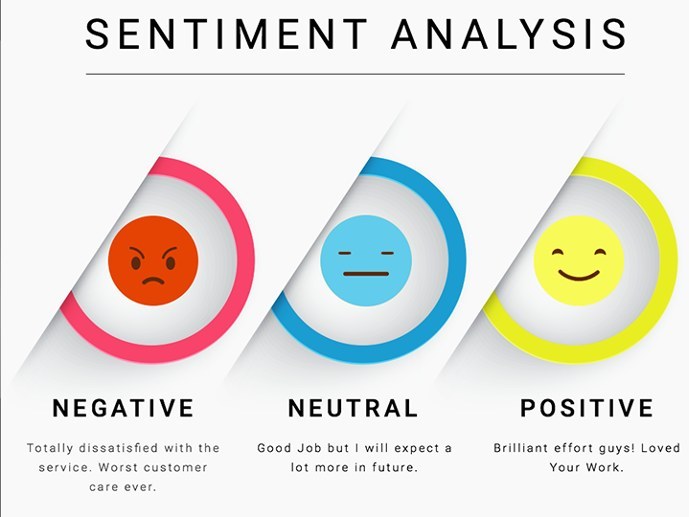
Fundamentals of Customer Sentiment: Must Follow Business Strategy in 2024
To create a personalized customer experience, your first step should be to know the sentiment of your customers.
At the moment, customer sentiment is gaining acceptance as one of the top segments of every business strategy. So, if you are running a business, and Customer Sentiment is not on your bucket list, it means you are missing out on the best parts of constructing a solid business strategy.
Ready to take your business to the next level? Let’s dig in!
What is customer sentiment (a basic interpretation)
Before we begin, let’s simplify the concept for you.
Customer sentiment definition
Customer sentiment is the viewpoint of a consumer about your product, service, or brand. It’s an exposure (after-effect) of a consumer’s feelings or emotions when they engage with your product.
Now, let’s look at an example.
Picture a WordPress user facing difficulty choosing the right helpdesk plugin. He has come across Fluent Support and Awesome Support. Both of these plugins are popular options.
One might expect a logical evaluation of pricing, features, and usability. But reality often defies our expectations. Here, the emotion of the user plays a significant role. A customer’s attachment & experience to a product stems from their emotion.
If Fluent Support ignites a positive emotion within the customer, he or she is more likely to return to it. So, we can come to the conclusion that decisions aren’t only driven by logical analysis. Rather, memorable experiences give a substantial boost to a customer’s decisions.
Since this kind of emotion may break or build a business, positive emotions about any product should be good for skyrocketing your business’s growth.
In technical terms we call that emotion, customer sentiment. It is a metric, a KPI (Key Performance Indicator), indicating how a customer feels about your business or brand. It is a qualitative measure of the customer experience.
Types of customer sentiment
All of your customers may not be the same. Different customers may have different ideas about your products or services. Thus, their sentiments may not be equal.
As customers may have different types of sentiments toward a product or service, experts have divided these sentiments into three simple categories. They are positive sentiment, neutral sentiment, and negative sentiment.
Three of types customer sentiment
- Positive sentiment: You are doing great. Keep it up and follow the consistency.
- Neutral sentiment: Not bad. But work more on your brand to establish a positive sentiment.
- Negative sentiment: Something is wrong with your product. Work on it and find a solution.
Customer sentiment analysis
You need to use customer sentiment analysis to understand the emotional connection between your business and customers. So, first, let’s learn about customer sentiment analysis.
You may put the concepts of ‘customer sentiment’ and ‘customer sentiment analysis’ in the same bucket. If yes, you are going into the wrong direction. They are both related but they have a few basic differences in meanings and purposes.
Customer sentiment is the genuine feeling that a customer holds in his mind. On the other hand, customer sentiment analysis involves systematically analyzing and understanding customer’s thoughts on our products or services.
In this whole process, you have to use a variety of tools, techniques, and methodologies.
Customer sentiment analysis is an automated process of discovering and measuring the collected data. The data you can acquire from customer reviews, social media posts, surveys, and so on.
Following the process, you can understand and discover the emotional connection that your client has. Therefore, you can understand your users’ sentiments qualitatively.
Why it is important to know about customer sentiment analysis?
Generally speaking, after some bad experiences, a customer will never want to use the product again. According to a research “66% of consumers are eager to pay more to businesses for an amazing experience”.
So you have to make sure about the quality of your product to grow positive sentiment, otherwise, your business strategy will be less effective.
Another study shows that, “Consumers with good experiences with your brands are more likely to spend 140% more. Additionally, 70% of customers feel frustrated when they do not receive a personalized experience”.
Therefore, you must round up all types of customer sentiment to analyze them in-depth.
The most important thing is that you can find out about negative sentiments. Negative customer sentiments are harmful to your business because they spread lousy words in the market.
3 best customer sentiment analysis tools
Searching for the best tools for analysis can be confusing. To eliminate your dilemma, we want to suggest 3 tools that are best known for customer sentiment analysis.
1. HubSpots Service Hub
Hubspot’s Service Hub includes a consumer feedback tool that evaluates survey responses. It can determine whether qualitative survey responses are positive or negative. It uses an NPS (Net Promoter Score) survey to determine customer reviews (positive or negative).
2. Userpilot
Userpilot is a cloud base software. This is a comprehensive product growth tool where you can set up an online survey. Moreover, it is very easy to use, and none of its features require any coding.
3. Talkwalker’s Quick Search
Talkwalker’s Quick Search is a social media search engine. It works best with your social media tool since it can tell how people feel about your company’s social media accounts. Quick Search can perform sentiment analysis on your social mentions in 25 different languages.
Note: All three of those tools have really good reviews, and users just love them. Each of them has their benefits and drawbacks. We suggest you to check their features, pricing, pros & cons. Just pick one and start analyzing your customers’ sentiments.
3 best methods for collecting customer sentiment
Here are the 3 best methods that you can leverage for collecting your customers’ sentiments.
Arrange interviews with users
An interview with a customer regarding the product is the simplest and most direct method of estimating sentiment where a user can interpret all the pros and cons of the products they used.
In the interview process, you have to ensure a proper environment by giving them the space to speak out. Just build a connection with them to get all the information they think about your brand.
Sometimes, you have to deal with difficult customers. Here, you have to be more practical. Just follow some simple tips that we have mentioned below:
- It would help if you listened more than you speak.
- Understand the consumer’s way of thinking.
- Ask questions to get to the bottom of their issue.
- Establish a common connection.
- Come up with a solution or recommendation that makes them cheerful.
During the interview process, you must keep your language professional, friendly, and respectful, as you represent your brand.
Sometimes, measuring feedback from the interview is more complicated than a survey because the responses could be unorganized. Try to put it in a structured way to solve the difficulty. And one thing is that you should arrange an interview only when
- You have introduced a new product.
- You wish to reframe the current brand you have.
- You want to extend the value of your current products.
Qualitative survey
Sometimes gathering all of that data about consumers’ experiences seems like a difficult task. But with a structured qualitative survey, you can collect some really useful insights about what they think about your product (positive, negative, or neutral).
A customer survey is one of the most common methods for collecting feedback from users. You can easily find out and measure their sentiments, like satisfaction or understanding expectations.
There are two ways to present your question:
- Close-ended (answering the query in your own words)
- Open-ended (predefined set of answers)
Customer surveys are primarily focused on quantification. You can conclude your survey using these 4 distinct types, commonly referred as the most prevalent forms of customer satisfaction surveys.
- Net Promoter Score (NPS): The Net Promoter Score was developed by Fred Reichheld, Bain & Company, and Satmetrix in 2003. It is used for measuring customer loyalty measuring the willingness of customers to recommend a company’s product or services to others.
- Customer Effort Score (CES): The Center for Customer Insights (CEB) created Customer Effort Score in 2010. This survey metric is used for measuring customer experience.
- Customer Satisfaction Score (CSAT): The Customer Satisfaction Score came about in 1994. This metric is used to measure the level of satisfaction that customers convey by using our product or service.
- Product-Market Fit (PMF): The founder of Product-Market Fit is Andy Rachleff. This metric describes a scenario in which a company’s targeted customers are telling others about the company’s products or services after buying and purchasing.
In the survey method, it is not possible to create a face-to-face interaction like an interview. But the survey method is appropriate in several ways for collecting sentiment.
What many consumers can’t say in an interview process, they can answer more fluently in the survey method. Besides, organizing interviews with customers is more challenging and time-consuming.
Social media monitoring
Social media is one of the ways to connect directly with consumers nowadays. Through this method, users can answer comfortably from behind a screen. It is a unique process to get feedback from them and to engage one-on-one.
Various social media platforms like Facebook, Instagram, LinkedIn, Twitter, etc. are used for collecting feedback. Therefore, gently encourage those who buy from you to share testimonials publicly. That will create engagement.
Also, if there is any issue related to the product, try to solve it publicly. Don’t convert it to private. Either solve it instantly or assure them that you are considering the issue if it is complex.
On social media, sometimes consumers provide critical feedback or negative comments that everyone can see. Face it with patience and try to convert it from negative to positive.
Wrapping up
Understanding customer sentiment is essential. A positive sentiment can greatly impact your business. Prioritizing it as a strategic goal is highly recommended.
As this business strategy is a game changer, just gather accurate customer information, focus more on positive clients, and win over unhappy shoppers.
Thank you for your time!
Start off with a powerful ticketing system that delivers smooth collaboration right out of the box.














Leave a Reply